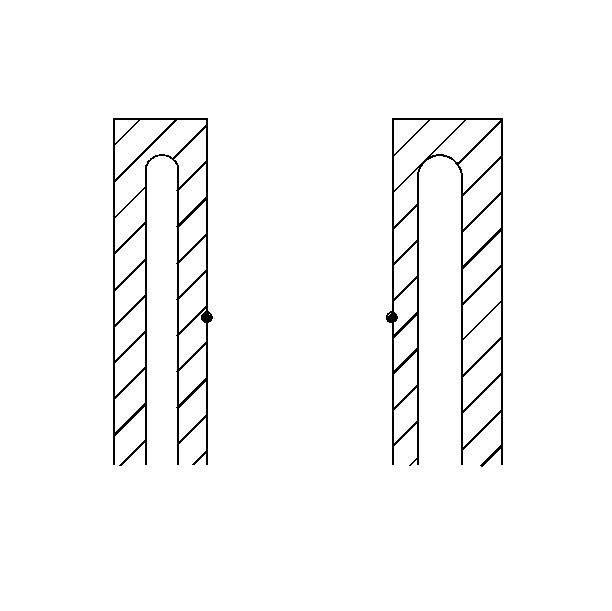Important: When fitting pistons, both the piston and the cylinder bore condition
must be considered together. Production and service pistons have the same
nominal weight and can be intermixed without affecting engine balance. If
necessary, used pistons may be fitted selectively to any cylinder of the engine,
providing they are in good condition.

- Measure the piston diameter. Replace the piston if it is worn or damaged.
Use either a standard or oversize piston.
- Measure the cylinder bore. If the cylinder bore is worn beyond
specifications, bore and hone to size.
Important: Finish hone when selecting the piston.
- Fit the piston to the cylinder.
- Use the following procedure in order to check used piston to cylinder
bore clearance:
| 4.1. | Measure the cylinder bore diameter with a telescope gauge. |
| 4.2. | Measure the piston diameter. Piston diameter is measured at a
point 12 mm (0.4724 in) up from the center of the piston skirt
tail. |
| 4.3. | Subtract the piston diameter from the cylinder bore diameter to
determine the piston-to-bore clearance. |
| 4.4. | Compare the piston-to-bore clearance obtained with those specified. |
| 4.5. | Determine if the piston-to-bore clearance is in acceptable range. |
- If the used piston is not acceptable, replace it with a new piston.
Ensure that the service piston is at a proper size. Service pistons are available
in standard and 0.25 mm (0.010 in) oversize.
- If the cylinder bore must be reconditioned, measure the new piston
diameter then hone the cylinder bore to obtain preferable clearance.
- Select the new piston and mark the piston to identify the cylinder
for which it was fitted.
- Scrub the cylinder bore and the piston with soap and hot water
to remove all foreign material.
- Dry the bore and use a clean towel with engine oil to scrub the
cylinder bore.
- Continue scrubbing the bore with clean towels and engine oil until
the towel stays clean.

